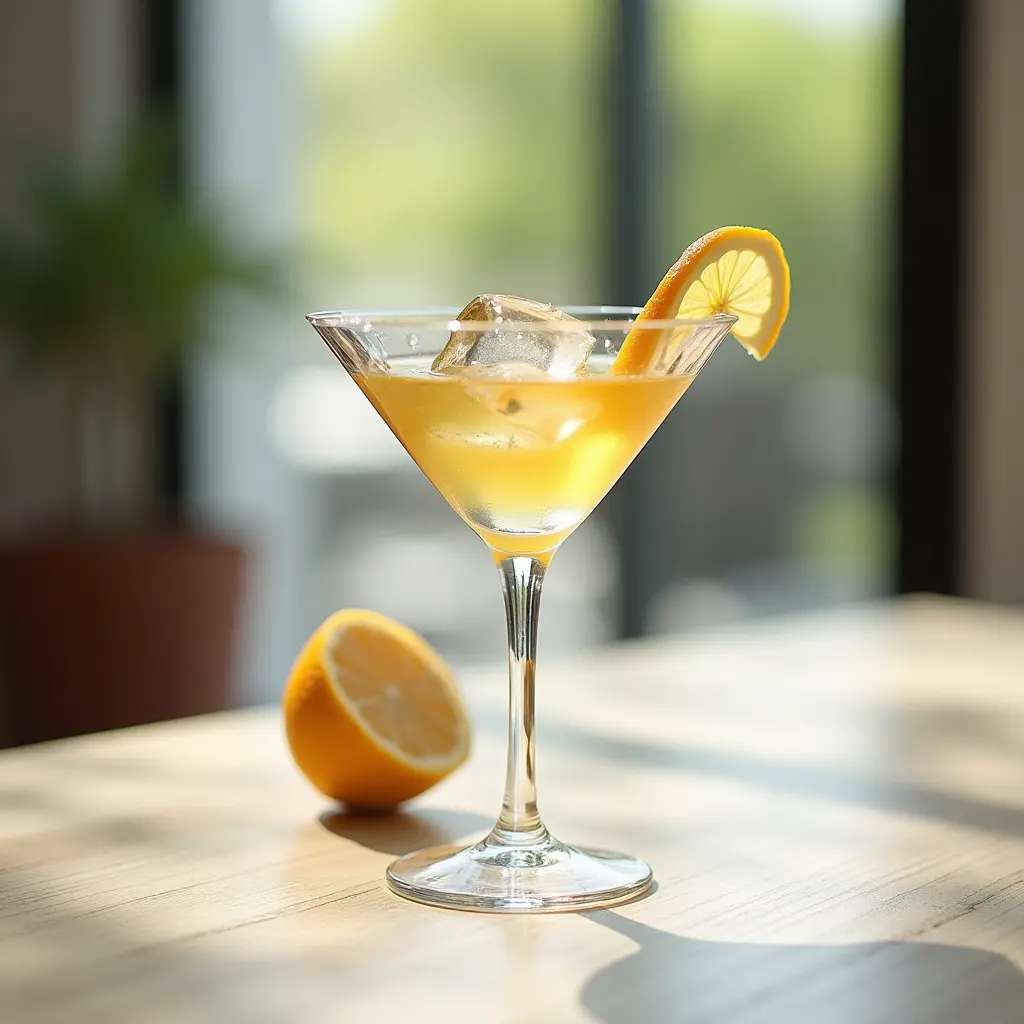Dry-Martini - Cocktail
spirit-forward

Introduction
Step into a world of timeless sophistication with the iconic Dry-Martini – a true legend among cocktails. This isn't just a drink; it's an experience, a perfectly balanced symphony for those who appreciate the finer things. Known for its 'Spirit-Forward' character, our Dry Martini masterfully blends the crisp, botanical notes of premium 'Gin' with the subtle, aromatic whispers of 'Dry Vermouth'. It’s an elegant, potent concoction, offering a smooth, clean finish that truly defines the 'Martini-Style' of drinking. Prepare to elevate your palate and discover why this 'Cocktail' remains a perennial favorite.
Ingredients
- 10 ml (0.34 US fl oz) Dry Vermouth
Preparation
- Begin by filling a sturdy mixing glass with plenty of fresh ice cubes. We're aiming for serious chill!
- Carefully pour your measured gin into the mixing glass, followed by the dry vermouth.
- Now, the magic happens: 'Stir' well for about 30-45 seconds. You want to properly chill and slightly dilute the spirits without bruising them, which is why we stir, not shake, this delicate 'Spirit-Forward' cocktail.
- Once thoroughly chilled, strain your perfectly crafted Dry Martini into a pre-chilled 'Martini Cocktail Glass'. Remember, it's 'Served Up', meaning no ice in the glass itself.
Notes & Tips
For the ultimate aroma and a vibrant citrus lift, take a fresh lemon peel and gently express its oils directly over the drink before dropping it in. Alternatively, for a more savory touch, garnish with one or three plump green olives – a classic choice! For a 'wet' martini, simply increase the vermouth slightly. For an even 'drier' martini, reduce the vermouth to just a whisper, perhaps merely rinsing the glass with it. Always ensure your glassware is thoroughly chilled for the best experience; a few minutes in the freezer works wonders!
History
While the exact origins of the Dry Martini are shrouded in delightful mystery, many cocktail historians trace its lineage back to the late 19th or early 20th century, evolving from drinks like the Martinez. Legend has it that this 'Spirit-Forward' masterpiece became a favorite among sophisticated city dwellers and influential figures, quickly solidifying its status as the quintessential 'Cocktail' for those who appreciated pure, unadulterated flavor. Its timeless appeal lies in its simplicity and the masterful balance between the potent 'Gin' and the aromatic 'Vermouth', a true testament to cocktail craftsmanship.
Visual Description
When this 'Cocktail' is 'Served in a Cocktail Glass', it presents a captivating, crystal-clear liquid, often with a slight golden or pale straw hue depending on the vermouth and gin. It's 'Served Up', meaning it arrives in its iconic V-shaped glass, perfectly chilled, glistening without a single ice cube to mar its elegance. The presentation is completed with either a delicate twist of lemon peel, its oils shimmering on the surface, or the verdant pop of a green olive (or three!) resting at the bottom or on a pick. It’s a vision of understated sophistication.
Conclusion
There you have it – the definitive guide to crafting a superb Dry-Martini. This 'Spirit' classic is more than just a drink; it's a statement. Perfect for kicking off a sophisticated evening, enjoying a quiet moment of reflection, or impressing guests with your bartending prowess. So go ahead, mix one up, savor its 'Martini-Style' elegance, and enjoy a truly 'Spirit-Forward' experience. Cheers!